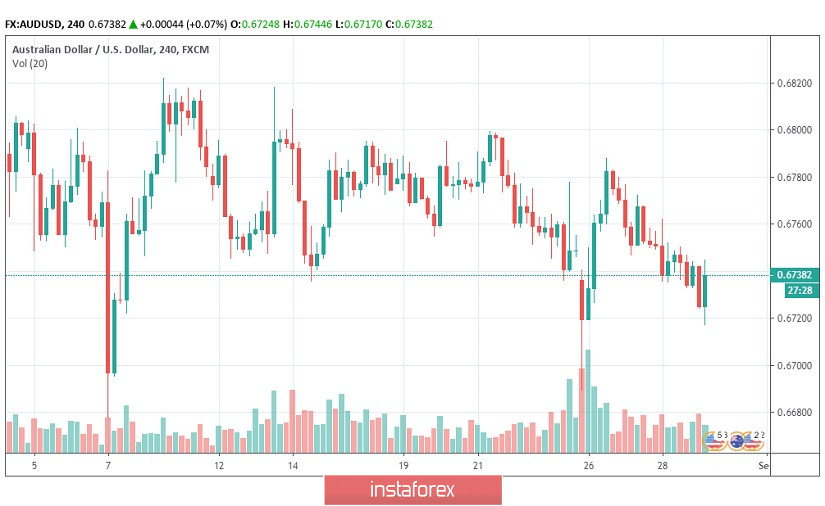The Australian dollar has been unable to make headway. So, AUD/USD retreated to lows below 0.6720 during Thursday's Asian session before a recovery to 0.6740. The pair remains close to 10-year lows just below 0.6700 registered earlier in August.
The latest Australian macroeconomic data remained weak with business investment declining 0.5% in the second quarter following a revised 1.3% decline in the first quarter. There was also a sharp 7.2% drop in new home sales following a 12.4% slump in the previous month.
There was, however, a 2.5% increase in plant and machinery spending which is a key component in the GDP calculation.
Domestic bond yields remain close to record lows with the benchmark 10-year yield around 0.88% with negative yields in real terms. The bond market is overbought given domestic inflation trends.
Second-quarter GDP data will be released next Wednesday and growth will also be supported by robust government spending.
The Reserve Bank of Australian will announce its latest interest rate decision on Tuesday with interest rates expected to be held at 1.00%.
Global trade and growth fears will continue to determine market sentiment in the short term with fears that the US-China trade war will severely damage growth. Inevitably, AUD/USD will be driven by trade headlines.
Australia's trade surplus hit a record high in July. Copper managed to recover from 2-year lows recorded earlier this week with iron ore prices also making strong gains on Thursday. Gold is trading near 6-year highs while silver remains at 28-month highs.
Despite the gloomy market mood, the Baltic dry bulk index which is an index of activity in the shipping sector has strengthened to the highest level since late 2013 which suggests that underlying global trade conditions have held firm.
CFTC data recorded little change in the latest week and close to record highs, indicating prospects for short covering if sentiment shifts.
Technically, there should be strong AUD/USD support into the 0.6700 area.






















